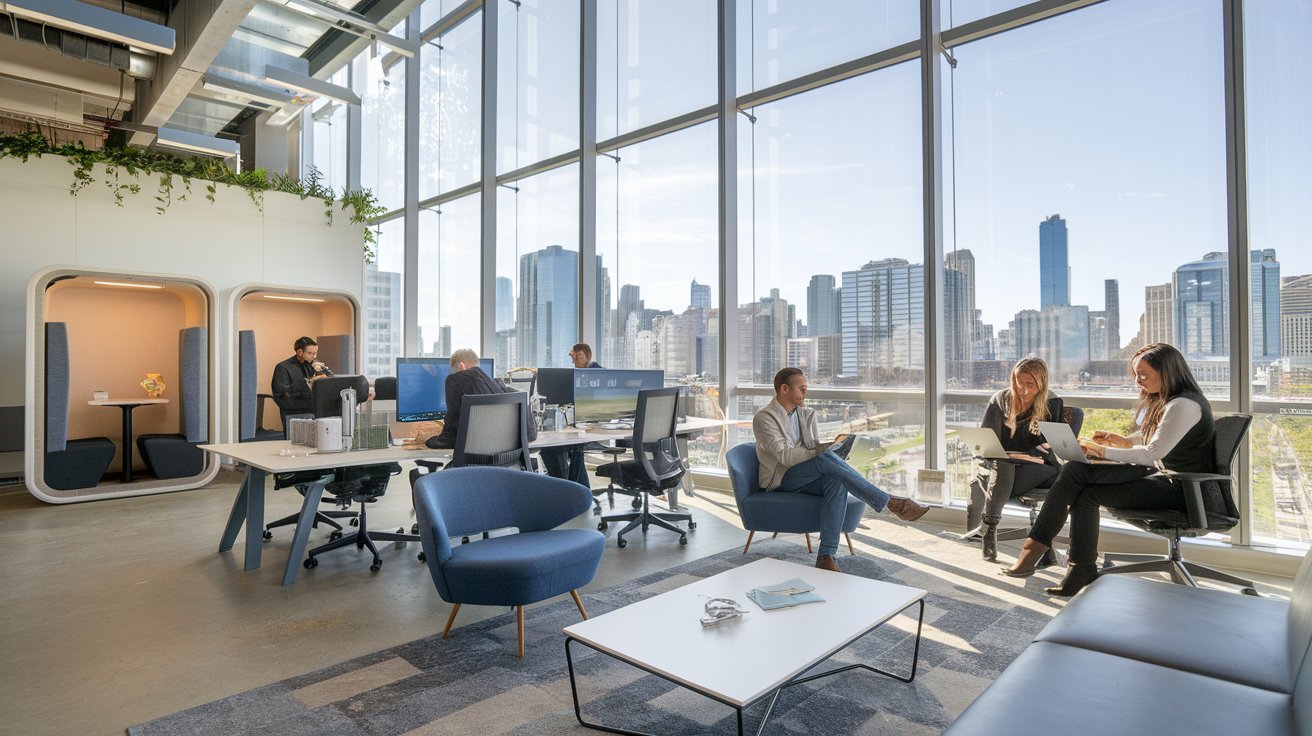
Hybrid Work Era
Overcoming the Post-Pandemic Leasing Challenge
Introduction
A prominent commercial office space developer faced a major hurdle in attracting corporate clients in the wake of post-pandemic hybrid work trends. With many businesses shifting to flexible remote work models, traditional office leasing demand declined, leading to lower occupancy rates and reduced corporate interest. The key challenge was to redefine office spaces as essential hubs for collaboration, productivity, and corporate culture while making them an attractive investment for businesses.
The Challenge
As businesses reconsidered their real estate strategies, our client found it difficult to maintain leasing interest in their office spaces. The main obstacles included:
- Changing Work Models: With remote and hybrid work models gaining popularity, businesses were downsizing or eliminating office space.
- Cost vs. Value Perception: Decision-makers hesitated to invest in office spaces due to concerns over return on investment (ROI).
- Lack of Differentiation: Competitor office spaces offered similar amenities, making it difficult for our client’s properties to stand out.
To combat these issues, we needed to craft a compelling strategy to reposition office spaces as indispensable for business success.
Our Approach
To drive engagement and leasing inquiries, we implemented a multi-channel strategy that positioned the office spaces as modern, flexible, and value-driven solutions. Our approach included:
1. B2B LinkedIn Marketing Strategy
We leveraged LinkedIn to target key decision-makers, including C-level executives, real estate managers, and HR professionals. Our campaign focused on:
- Thought leadership content highlighting the benefits of in-person collaboration.
- Engaging posts showcasing modern office environments designed for hybrid work.
- Direct outreach to corporate leaders exploring office space solutions.
2. Data-Driven Case Studies on ROI
To address concerns about the financial viability of office space investments, we developed a series of case studies that showcased:
- Real-life success stories of companies that improved productivity and culture through office space investment.
- Data-backed insights on how hybrid-friendly office designs boost employee engagement.
- Cost-benefit analysis comparing remote work expenses with well-designed office setups.
3. 3D Visualization Technology
We introduced cutting-edge 3D visualization tools to allow prospective tenants to:
- Customize office layouts to fit their unique business needs.
- Experience an immersive virtual tour of available spaces.
- Understand how flexible design options accommodate hybrid work models.
4. Industry Networking and Webinars
To position our client as a leader in commercial office development, we organized high-profile networking events and webinars featuring:
- Industry experts discussing the evolving future of workspaces.
- Panel discussions with corporate leaders sharing insights on office space utilization.
- Live Q&A sessions addressing leasing concerns and space optimization strategies.
Results & Success Metrics
Our strategic approach delivered remarkable results within a short period:
- 80% occupancy rate achieved within eight months, significantly improving the developer’s revenue stream.
- 30% increase in corporate leasing inquiries, demonstrating heightened interest in office investments.
- Secured long-term leases with two Fortune 500 companies, reinforcing the credibility and demand for premium office spaces.
Conclusion
This case study highlights how innovative marketing, data-driven storytelling, and technology integration can successfully reposition commercial office spaces in a changing market. By addressing decision-makers’ concerns and showcasing office environments as valuable assets rather than liabilities, we transformed a struggling leasing model into a thriving commercial success. As hybrid work continues to evolve, forward-thinking real estate strategies will remain essential in driving corporate leasing demand and maximizing occupancy rates.